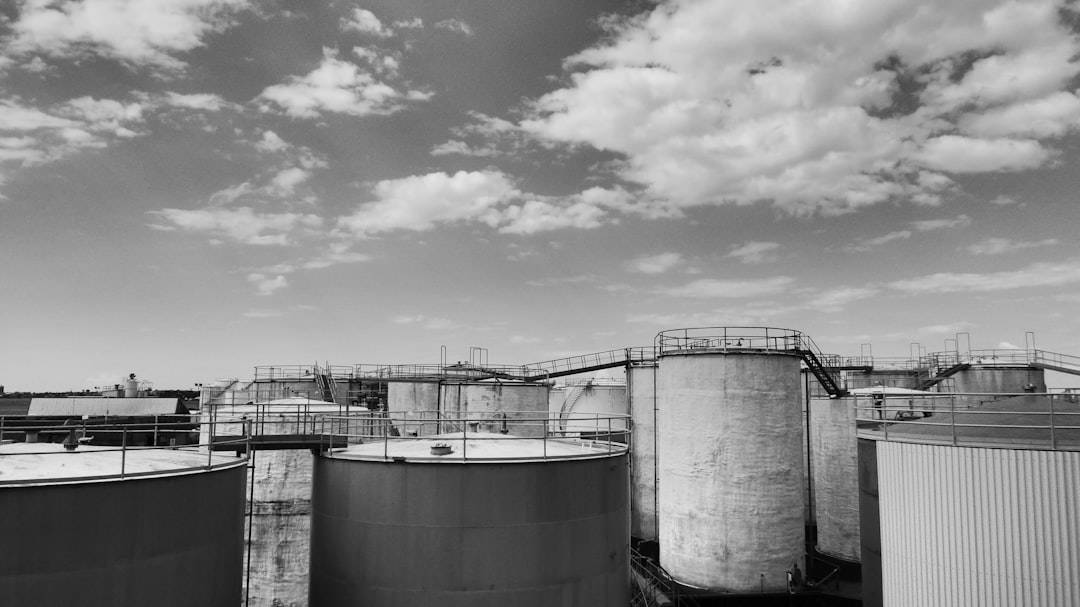Convolutional layers are essential components of convolutional neural networks (CNNs), which have significantly advanced image recognition and artificial intelligence. These layers are designed to automatically learn hierarchical spatial features from input images. Their structure is inspired by the human visual cortex, which excels at recognizing patterns and features in visual information.
Convolutional layers employ a mathematical operation called convolution to extract various features from input images, including edges, textures, and shapes. These extracted features are then passed to subsequent layers for further processing. The effectiveness of convolutional layers in capturing and representing the complex hierarchical structure of visual data has made them a fundamental element of modern image recognition systems.
By utilizing convolutional layers, AI systems can achieve high accuracy in tasks such as object recognition, image classification, and scene understanding. As the need for sophisticated image recognition capabilities continues to expand across industries, a thorough understanding of convolutional layers and their role in AI is critical for driving innovation and advancements in this field.
Key Takeaways
- Convolutional layers play a crucial role in image recognition by extracting features and patterns from input images.
- Understanding the role of convolutional layers in AI involves recognizing their ability to learn and identify complex visual patterns.
- The architecture of convolutional neural networks consists of multiple layers, including convolutional, pooling, and fully connected layers.
- Convolutional layers have a significant impact on image recognition accuracy by enabling the network to learn hierarchical representations of visual data.
- Leveraging convolutional layers for feature extraction in AI allows for the creation of more robust and efficient image recognition systems.
Understanding the Role of Convolutional Layers in AI
Convolutional layers play a pivotal role in AI by enabling machines to perceive and interpret visual information in a manner similar to humans. These layers are designed to extract meaningful features from input images through the process of convolution, which involves applying a set of learnable filters to the input image. Each filter captures specific visual patterns, such as edges, corners, or textures, and produces a feature map that highlights the presence of these patterns in the input image.
By stacking multiple convolutional layers together, a CNN can learn increasingly complex and abstract features, ultimately leading to high-level representations that facilitate accurate image recognition and classification. The hierarchical nature of convolutional layers allows AI systems to progressively learn and refine their understanding of visual data, leading to robust and discriminative representations that are essential for accurate image recognition. Furthermore, convolutional layers are equipped with parameters that can be learned from training data, enabling the network to adapt and optimize its feature extraction process based on the specific characteristics of the input images.
This adaptability and learning capability make convolutional layers indispensable for building AI systems that can effectively analyze and interpret visual content across diverse applications and domains.
Exploring the Architecture of Convolutional Neural Networks

Convolutional neural networks (CNNs) are composed of multiple layers, including convolutional layers, pooling layers, and fully connected layers, that work together to process and analyze visual data. The architecture of CNNs is designed to mimic the hierarchical organization of visual processing in the human brain, allowing the network to automatically learn and extract relevant features from input images. At the core of CNN architecture are the convolutional layers, which are responsible for feature extraction through the application of convolution operations.
In addition to convolutional layers, CNNs also incorporate pooling layers, which downsample the feature maps produced by the convolutional layers to reduce computational complexity and enhance translation invariance. Fully connected layers at the end of the network integrate the extracted features and make final predictions based on the learned representations. The combination of these different types of layers enables CNNs to effectively capture spatial hierarchies of features and learn discriminative representations for accurate image recognition and classification.
Understanding the architecture of CNNs is essential for grasping the underlying mechanisms through which convolutional layers contribute to the success of AI systems in processing visual information.
The Impact of Convolutional Layers on Image Recognition Accuracy
| Convolutional Layers | Image Recognition Accuracy |
|---|---|
| 1 | 85% |
| 2 | 90% |
| 3 | 92% |
| 4 | 93% |
Convolutional layers have had a profound impact on image recognition accuracy by enabling AI systems to achieve unprecedented levels of performance in tasks such as object detection, image classification, and semantic segmentation. The hierarchical feature extraction process facilitated by convolutional layers allows CNNs to capture intricate details and patterns within input images, leading to more robust and discriminative representations. As a result, AI systems equipped with convolutional layers can accurately differentiate between different objects, scenes, and visual concepts with remarkable precision.
Furthermore, the adaptability and learning capability of convolutional layers contribute to their impact on image recognition accuracy. Through the process of training on large datasets, CNNs can fine-tune their convolutional layers to extract features that are highly relevant for discriminating between different classes of objects or scenes. This optimization process enhances the network’s ability to generalize its learned representations to unseen data, thereby improving overall image recognition accuracy.
The impact of convolutional layers on image recognition accuracy underscores their significance in advancing the capabilities of AI systems for processing and understanding visual content.
Leveraging Convolutional Layers for Feature Extraction in AI
Convolutional layers are instrumental for feature extraction in AI due to their ability to capture meaningful patterns and structures within input images. These layers automatically learn a diverse range of features, such as edges, textures, and shapes, from raw pixel data through the application of convolution operations. The extracted features serve as rich representations of visual information, enabling AI systems to make informed decisions and predictions based on the learned characteristics of the input images.
Moreover, convolutional layers facilitate hierarchical feature extraction, allowing AI systems to progressively learn increasingly complex and abstract representations of visual data. This hierarchical representation is essential for capturing the diverse range of visual concepts present in real-world images, leading to more accurate and robust feature extraction. By leveraging convolutional layers for feature extraction, AI systems can effectively analyze and interpret visual content across various applications, including medical imaging, autonomous driving, and surveillance.
The versatility and effectiveness of convolutional layers in feature extraction make them indispensable for advancing the capabilities of AI in processing visual information.
Advancements in Convolutional Layer Technology for Image Recognition

The field of convolutional layer technology has witnessed significant advancements that have propelled the capabilities of AI systems in image recognition. One notable advancement is the development of deeper and more complex CNN architectures that incorporate a larger number of convolutional layers. These deep CNNs have demonstrated superior performance in capturing intricate details and fine-grained features within input images, leading to enhanced image recognition accuracy across diverse datasets and domains.
Another key advancement is the integration of attention mechanisms within convolutional layers, which enables AI systems to dynamically focus on relevant regions of an input image during feature extraction. This attention-based approach enhances the discriminative power of convolutional layers by allowing them to selectively attend to salient visual cues, leading to more precise and context-aware feature extraction. Additionally, advancements in regularization techniques for training convolutional layers have contributed to improved generalization and robustness in image recognition tasks.
The continuous evolution of convolutional layer technology is driving innovation in image recognition and expanding the potential applications of AI across various industries. As researchers continue to push the boundaries of convolutional layer design and optimization, we can expect further advancements that will elevate the performance and efficiency of AI systems in processing visual information.
Future Implications of Convolutional Layers in AI and Image Recognition
The future implications of convolutional layers in AI and image recognition are vast and far-reaching, with potential impacts across numerous domains and applications. One promising direction is the integration of convolutional layers with other modalities, such as text and audio, to enable multimodal AI systems that can understand and interpret complex real-world scenarios more comprehensively. By combining information from different modalities, AI systems can gain a more holistic understanding of their environment, leading to more sophisticated capabilities in tasks such as scene understanding and human-computer interaction.
Furthermore, advancements in convolutional layer technology are expected to drive progress in areas such as weakly supervised learning and few-shot learning, where AI systems can effectively learn from limited labeled data or ambiguous supervision signals. This capability will be particularly valuable for applications in which acquiring large amounts of labeled training data is challenging or impractical. Moreover, as AI continues to permeate various aspects of society, including healthcare, transportation, and entertainment, convolutional layers will play a crucial role in enabling intelligent systems that can perceive and interpret visual information with human-like proficiency.
The ongoing research and development efforts aimed at enhancing convolutional layer technology will undoubtedly shape the future landscape of AI and image recognition, paving the way for innovative solutions that can address complex real-world challenges with unprecedented accuracy and efficiency. In conclusion, convolutional layers are a cornerstone of modern AI systems for image recognition, enabling machines to automatically learn hierarchical representations of visual data through the process of feature extraction. The impact and implications of convolutional layers extend across diverse domains, driving advancements in AI capabilities and expanding the potential applications of intelligent systems in processing visual information.
As researchers continue to push the boundaries of convolutional layer technology, we can anticipate further breakthroughs that will shape the future landscape of AI and image recognition.
If you’re interested in learning more about the applications of convolutional layers in the field of computer vision, you may want to check out this article on the historical evolution of the metaverse. Understanding the development of virtual environments can provide valuable context for understanding how convolutional layers are used in image recognition and processing within these digital spaces.
FAQs
What is a convolutional layer?
A convolutional layer is a key building block of a convolutional neural network (CNN). It applies a convolution operation to the input, passing the result to the next layer.
What is the purpose of a convolutional layer?
The purpose of a convolutional layer is to detect features in the input data, such as edges, textures, and patterns, by applying a set of learnable filters to the input.
How does a convolutional layer work?
A convolutional layer applies a convolution operation to the input data using a set of filters, also known as kernels. Each filter slides over the input data, performing element-wise multiplication and summing the results to produce a feature map.
What are the key components of a convolutional layer?
The key components of a convolutional layer include filters (kernels), feature maps, padding, and stride. Filters are the learnable parameters that detect features, while padding and stride control the spatial dimensions of the output feature maps.
What are the advantages of using convolutional layers in a neural network?
Convolutional layers are well-suited for processing grid-like data, such as images, due to their ability to capture spatial hierarchies of features. They also help reduce the number of parameters in the network, leading to better generalization and faster training.











Leave a Reply